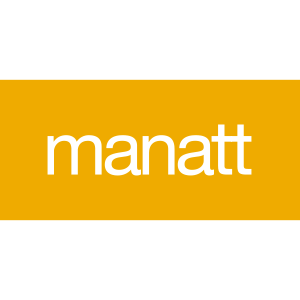Nathaniel L. Bach
Manatt Entertainment
Sarah E. Moses
Entertainment Litigation
Although NFTs (non-fungible tokens) have been around since approximately 2014, they exploded into the mainstream in early 2021, fetching eye-popping prices at auction. After Beeple’s March 2021 sale made headlines, the market remained red hot through the rest of that year. For example, “The Merge”—a series of NFTs created by digital artist Pak—sold for $91.8 million in December 2021. It has been reported that the global NFT market was worth $41 billion in 2021 alone1—a figure rivaling that for the entire global fine art market. Even accounting for a possible slowdown in the NFT market due to saturation or recent drops in crypto prices, there is no question that substantial sums of money (and valuable intellectual property rights) are on the line and may pose significant risks, particularly given the gold rush-like nature of the market.
For the uninitiated, an NFT is a digital asset (think a publicly verifiable and unique certificate of authenticity) that is stored on a blockchain and is typically purchased with cryptocurrency. When NFTs are created, or “minted,” they are listed on an NFT marketplace, like OpenSea or Rarible, and frequently sold or traded pursuant to accompanying “smart contracts”—software encoded with the NFT that sets the terms of current and future transactions in that NFT. Smart contracts are self-executing, meaning there is no need for an intermediary or central authority, and because they are stored on the blockchain, they provide a public and secure transaction history of the NFT. An NFT itself can be linked to an underlying digital or physical asset. In the former instance, the NFT and smart contract are stored on the blockchain, and the digital media file—for example, a JPEG, GIF, video or music file—may be stored separately, usually on a single central server or a decentralized network.
Eighteen months since the NFT boom captured the public consciousness, we can now examine a slew of lawsuits and initial court rulings to help NFT market participants—buyers, sellers, trading platforms, investors and IP holders—assess such risks and consider whether and where litigation is likely. These risks and considerations are all the greater in the context of the current “crypto winter,” in which cryptocurrency valuations have fallen significantly from prior highs. Here, then, are some of the major NFT-related litigation and IP trends we are seeing:
As fallout from the NFT boom continues and as the metaverse continues to expand, so too will legal risks and litigation around it. Content creators, licensors, investors and other stakeholders will do well to continue to monitor these developments.
Learn more about Manatt’ NFT and metaverse capabilities.
1 Natasha Dailey, NFTs ballooned to a $41 billion market in 2021 and are catching up to the total size of the global fine art market, Insider.com, Jan. 6, 2022 (available at https://markets.businessinsider.com/news/currencies/nft-market-41-billion-nearing-fine-art-market-size-2022-1).
2 McCollum v. Opulous, et al., Case No. 2:22-cv-00587-MWF-MAR (C.D. Cal.).
3 Nike, Inc. v. StockX LLC, Case No. 1:22-cv-000983-VEC (S.D.N.Y).
4 Hermès International, et al. v. Mason Rothschild, Case No. 1:22-cv-00384-JSR (S.D.N.Y.).
5 Id. at Dkt. No. 50, pp. 13-18.
6 Id. at p. 12.
7 Id. at p. 3, n.1.
8 Miramax, LLC v. Quentin Tarantino, et al., Case No. 2:21-cv-08979-FMO-JC (C.D. Cal.).
9 Sarah Emerson, Seth Green’s Stolen Bored Ape Is Back Home, BuzzFeed News, June 9, 2022 (available at https://www.buzzfeednews.com/article/sarahemerson/seth-green-bored-ape-nft-returned).
ATTORNEY ADVERTISING
pursuant to New York DR 2-101(f)
© 2022 Manatt, Phelps & Phillips, LLP.
All rights reserved

